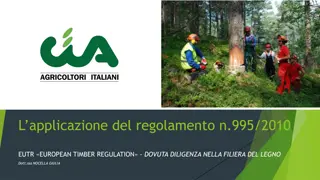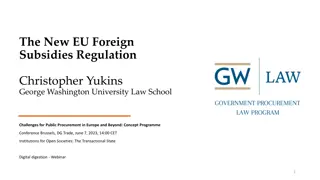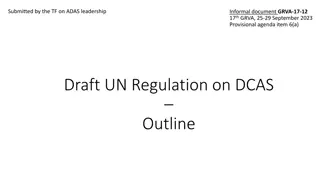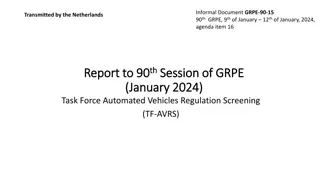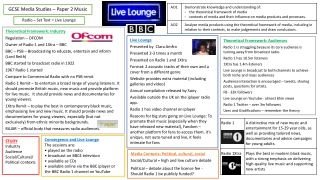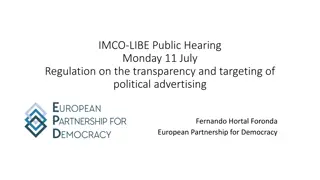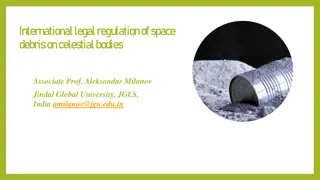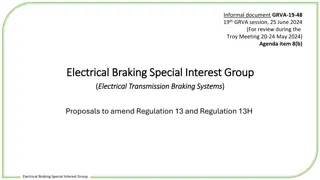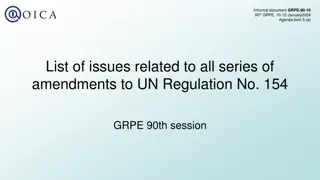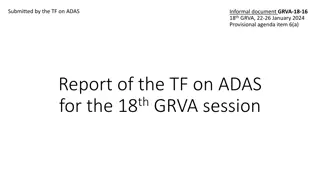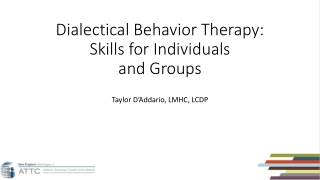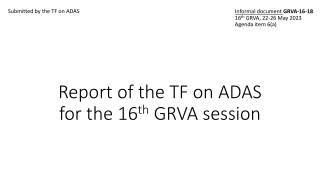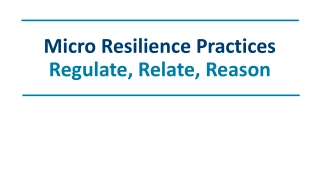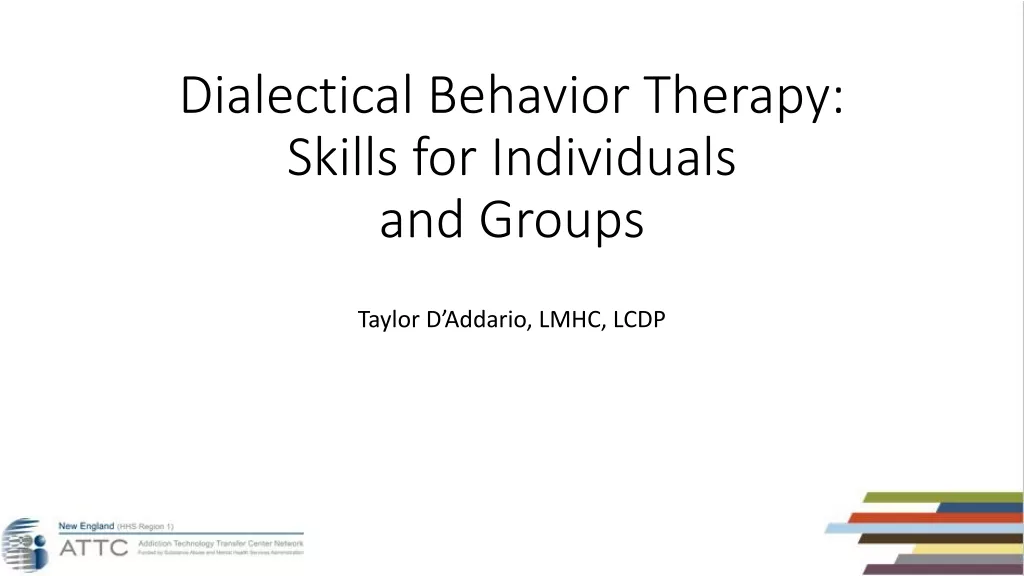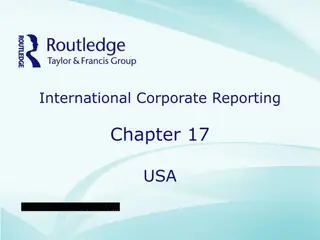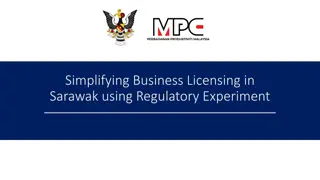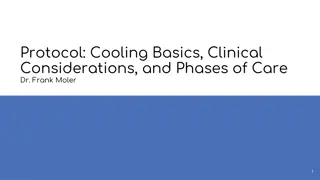REGULATION OF PLASMID COPY NUMBER
Plasmids regulate their copy number to maintain a balance that doesn't burden the host cell. Copy numbers vary based on factors like plasmid size and culture conditions. Plasmids are classified as stringent or relaxed based on replication control. Various systems, including counter-transcribed RNAs and proteins, antisense RNAs, and iterons, are involved in regulating plasmid copy numbers and ensuring they replicate appropriately.
Download Presentation
Please find below an Image/Link to download the presentation.
The content on the website is provided AS IS for your information and personal use only. It may not be sold, licensed, or shared on other websites without obtaining consent from the author. Download presentation by click this link. If you encounter any issues during the download, it is possible that the publisher has removed the file from their server.
Presentation Transcript
REGULATION OF PLASMID COPY NUMBER Plasmids must regulate their copy number to ensure that they do not excessively burden the host or become lost during cell division.
COPY NUMBER OF PLASMID Copy number refers to the average or expected number of copies per host cell. Plasmids are either low, medium or high copy number. Plasmids vary widely in copy number depending on three main factors: 1) The ori and its constituents (e.g. ColE1 RNA I and RNA II). 2) The size of the plasmid (bigger plasmids may be replicated at a lower number as they represent a great metabolic burden for the cell). 3) Culture conditions (i.e. factors that influence the metabolic burden on the host). Typical number of copies per bacterial cell Category Low copy 15 20 copies per cell Medium copy 20 100 copies per cell High copy 500 700 copies per cell
Based upon the number of copies per cell, plasmids are classified into two types. 1. Stringent plasmids: Plasmids are said to be under stringent control of replication when they are dependent on the presence of initiation proteins synthesized by the host cell in order to start their own replication. In general, these types of plasmids tend to be low copy number. Generally, conjugative plasmids are mostly stringent plasmids 2. Relaxed plasmids: Plasmids that can initiate DNA replication independently of the host's initiation proteins are said to be under relaxed control, as they only require the host's replication machinery for elongation and termination. These types of plasmids tend to be high copy number. Generally, relaxed plasmids are of low molecular weight and most of them are of the non conjugative type.
There are three general types of plasmid copy number control systems, depending on the type of negative control element used: (i) counter transcribed (ct) RNAs and a protein. Within this group, there are two categories. a) In one of them, the ctRNA plays the main regulatory role, whereas the protein has been proposed as only an auxiliary element. b) Within the second category, both elements, acting on different targets, could correct fluctuations in the copy number. (ii) antisense RNAs that hybridize to a complementary region of an essential RNA, therefore termed counter transcribed (ct) RNAs. (iii) directly repeated sequences (iterons) that complex with cognate replication (Rep) initiator proteins
Regulation of plasmid R1 copy number by antisense RNA and auxiliary protein
Most plasmids require a plasmid-encoded protein, usually called Rep, to separate the strands of DNA at the origin of replication (oriV) to initiate DNA replication. Rep binds to specific DNA sequences in oriV which are unique to a plasmid type (example-R1). The synthesis of Rep protein is controlled in order to limit plasmid replication and therefore regulate copy number. In the case of R1 plasmid, expression of the essential gene repA requires the translation of the leader gene tap, which is translationally coupled to repA. A reading frame for a 24 amino acid leader peptide (Tap-translational activator peptide) is located in the region between the copA and repA genes.
The main replication control element is the ctRNA, CopA, which inhibits translation of tap and, indirectly, that of repA. RepA expression is also regulated post-transcriptionally from the secondary promoter by an antisense RNA called CopA. CopA interacts with its RNA target in the RepA mRNA and forms a complex RNA-RNA duplex. The resultant double stranded RNA is cleaved by RNase III, preventing synthesis of RepA. The second inhibitory element of R1 is the product of the CopB gene, which is co- transcribed with tap and repA from promoter P1. CopB protein is a transcriptional repressor of a second promoter, P2, located downstream of copB, which directs the synthesis of a tap repA mRNA so that repA is expressed almost exclusively from P1.
Dual regulation by ctRNA and inhibitory protein in plasmid pIP501
In the case of pIP501, the initiator RepR protein acts on the origin (oriR) located downstream of repR. The transcriptional repressor CopR regulates transcription from pII, which is the only promoter that directs the expression of repR. CopR is synthesized from promoter pI, which would be constitutive. From promoter pIII, the inhibitor ctRNA III is synthesized. Interaction of ctRNA III with its target in the leader region of the repR mRNA induces (+) generation of an mRNA secondary structure, which acts as a transcriptional attenuator, avoiding repR expression. CopR-mediated repression does not completely inhibit transcription from pII, which is the only promoter that directs the expression of gene repR, essential for plasmid replication. A third promoter, pIII, directs the synthesis of RNA III, a ctRNA that inhibits the expression of repR by a mechanism of transcriptional attenuation.
Copy number control by competition between pseudoknot formation and antisense RNA binding at a specific RNA site Control of replication by pseudoknot formation in ColIb-P9. Genes repY (for leader peptide) and repZ (for initiator of replication) are translationally coupled. On the mRNA, the Shine Dalgarno sequence (SD) of repY is exposed, whereas the SD and the initiation codon of repZ can be occluded within structure III. If there is no interaction with Inc RNA (left), repY translation takes place. Stalled ribosomes at the end of repY unfold structure III, allowing the formation of the pseudoknot between the region located on the loop of structure I (double lines) and its complementary region (stippled rectangle). This facilitates binding of the ribosomes (ellipses) to the repZ SD sequences, followed by translation of repZ. The antisense Inc RNA (right) would hinder pseudoknot formation and translation of repY, leading to inhibition of repZ translation.
Loop Stem
ITERON MEDIATED COPY NUMBER CONTROL (HANDCUFFING) Iterons Replication origins of a family of bacterial plasmids have multiple sites, called iterons, for binding a plasmid specific replication initiator protein. The iteron initiator interactions are essential for plasmid replication as well as for inhibition of plasmid over replication. Iterons are directly repeated DNA sequences present in the origin of replication in some plasmids, which play an important role in regulation of plasmid copy number in bacterial cells. Iterons represent Rep protein-binding sites to initiate replication. They are quite short sequences varying in no. of base pairs constituting the repeats (15-76 bp) in different plasmids. The iteron number and spacing between iterons also can differ among iteron-containing plasmids.
[1] Initiator protein monomers (at low cellular concentrations) activate origin of replication [2] Dimerization of protein at higher cellular concentrations [3] Transcriptional autorepression [4] Handcuffing
Limiting Factors of Initiation 1) Transcriptional autorepression that reduces initiator synthesis 2) Initiator dimerization that reduces the concentration of monomers, the form active in initiation 3) The monomeric forms of RepA that bind to iterons can subsequently bind through protein protein interactions with other RepA monomer iteron complexes, even those on sister plasmids. The result, called handcuffing, effectively ties up the plasmids, preventing movement of the replication fork. As the cell volume increases, the RepA dimers disassociate and handcuffing decreases.
REFERENCES https://onlinelibrary.wiley.com/doi/full/10.1046/j.1365-2958.2000.02005.x https://onlinelibrary.wiley.com/doi/full/10.1111/j.1365-2958.2006.05229.x Microbial physiology by Albert G. Moat, John W. Foster and Michael P. Spector


